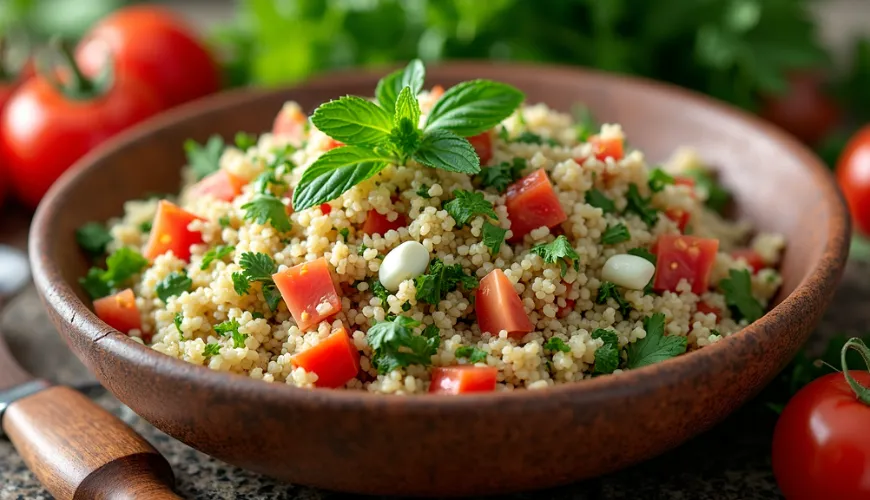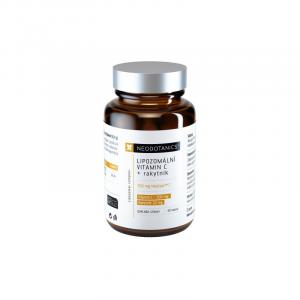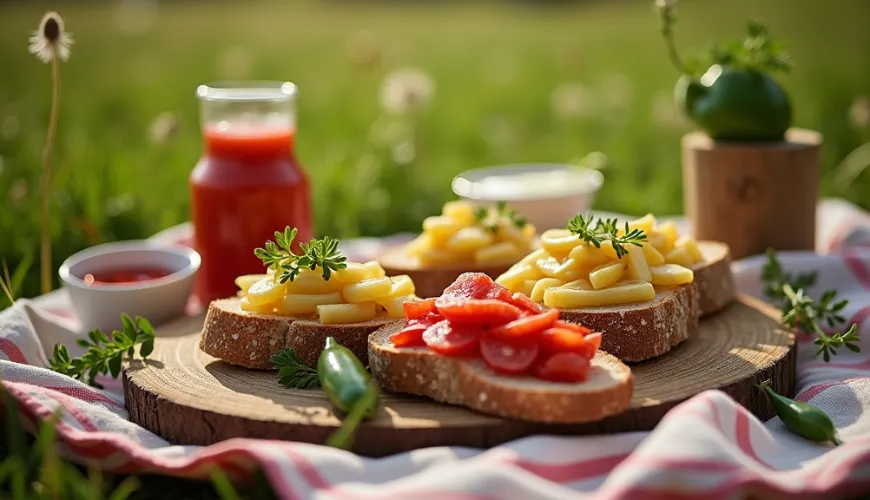
Where did tabouleh originate and why is it so popular worldwide

Tabouleh - a Refreshing Classic from the Mediterranean That Will Captivate Your Taste Buds
Mediterranean cuisine is often celebrated for its freshness, simplicity, and health-benefiting ingredients. Among its staples is the tabouleh salad – an herbal treasure originating from the Levant, which has spread to kitchens worldwide due to its flavor, colors, and nutritional values. Although it's a traditional dish, its popularity continues to grow, especially among those who embrace a healthy lifestyle or seek inspiration for plant-based diets.
While most salads rely on greens such as romaine lettuce, lamb's lettuce, or spinach, tabouleh stands out. Its base is not leaves but herbs. Lots of herbs. Parsley, mint, spring onions, sometimes even coriander – all mixed with tomatoes, lemon juice, olive oil, and a bit of grain. The result is a light yet flavorful salad that can serve as a side dish or a standalone meal.
Its Origins
Tabouleh (sometimes spelled as tabbouleh or tabouli) originates from the Levant region, which includes modern-day Lebanon, Syria, Jordan, and Palestine. In Lebanon and Syria, it is even considered a national dish. Its history dates back to ancient times, with similar salads mentioned in medieval Arabic cookbooks.
Although now often served as part of a rich selection of meze (appetizers), it used to play a much more important role in the diet – it was the main course. The earlier version might have differed somewhat from today's, but the core idea remained the same: use fresh seasonal ingredients at hand and transform them into something special.
What Does Authentic Tabouleh Look Like?
In the original Lebanese version, a large amount of finely chopped flat-leaf parsley dominates the salad – grains are more of a complement. The most commonly used grain is fine bulgur, but in some variations (especially Western ones), you might encounter couscous or even quinoa. These alternatives are popular among those seeking a gluten-free option or wanting to enrich the salad with more protein.
Alongside parsley, fresh mint, diced tomatoes, spring onions, and high-quality extra virgin olive oil with lemon juice are added. The seasoning is minimal – usually just salt and pepper. The secret lies in the freshness of the ingredients and their proper balance.
And there's the catch. In many European or American versions, there are often too few herbs and too much bulgur – the outcome then resembles a grain salad more than authentic tabouleh. Real tabouleh should be green, juicy, and fragrant with lemon and herbs.
How to Prepare Tabouleh at Home?
Preparing a tabouleh salad isn't difficult, but it does require patience. Precision in chopping is crucial. Parsley needs to be chopped very finely to mix well in the salad and not form clumps.
Here's one tried-and-true recipe:
Classic Lebanese Tabouleh Recipe
Ingredients:
- 2 bunches of flat-leaf parsley
- 10–15 fresh mint leaves
- 3 medium tomatoes
- 2 spring onions
- 2 tablespoons of fine bulgur
- Juice of 1 lemon
- 3–4 tablespoons of extra virgin olive oil
- Sea salt, freshly ground pepper
Instructions:
- Pour a little boiling water over the bulgur and let it soften for about 15 minutes, then drain any excess water.
- Thoroughly wash, dry, and chop the parsley and mint as finely as possible.
- Dice the tomatoes into very small cubes – you can peel them first if you prefer a smoother salad.
- Chop the spring onions, including some of the green parts.
- Mix all the ingredients in a large bowl, add lemon juice, olive oil, salt, and pepper.
- Stir and let it rest in the fridge for at least 30 minutes, ideally an hour.
The result is an incredibly refreshing salad, perfect as a side dish to grilled dishes, baked falafel, or simply with a slice of fresh bread.
Tabouleh as a Symbol of a Healthy Lifestyle
It's no coincidence that the tabouleh recipe has gained popularity among health food advocates. With its high content of fresh herbs, antioxidants, and healthy fats from olive oil, this salad offers an ideal combination of taste and nutrition. It is naturally vegetarian, easily adaptable to vegan or gluten-free versions, and low in calories.
Besides being light, it has anti-inflammatory properties, supports digestion, and contributes to better immunity – thanks to the high content of vitamin C from tomatoes and lemon, fiber, and chlorophyll from the herbs. No wonder it's often recommended as part of the Mediterranean diet, which the World Health Organization considers one of the healthiest in the world.
Try our natural products
There's also a cultural significance – in many Middle Eastern countries, tabouleh salad becomes part of family celebrations, picnics, and holidays. It's a dish that brings people together – light, simple, yet exceptionally tasty.
Variations on the Classic
Although authentic Lebanese tabouleh has a specific composition, many home cooks and restaurants enjoy experimenting with the recipe. It's not hard to find versions with added lentils, pomegranate, cucumber, or avocado. In modern vegan bistros, tabouleh with quinoa is often prepared, which has a similar texture to bulgur but is gluten-free and richer in protein.
An example is a Prague café focused on plant-based cuisine, where tabouleh is served with a baked chickpea burger and hummus – as part of a sustainable, nutritionally balanced meal. Guests appreciate it not only for its taste but also for how "clean" it makes them feel.
As the renowned Israeli chef Yotam Ottolenghi says: “Good food is always more than just ingredients. It's culture, emotions, sharing.” And tabouleh is a beautiful testament to that.
Though the tabouleh salad may seem simple, almost mundane, its charm lies in its apparent modesty. It's a dish that doesn't seek to impress but naturally delights – like a summer breeze on a hot day. Whether you prepare it according to the classic recipe or choose your own path, one thing is certain: with tabouleh, you can never go wrong.







